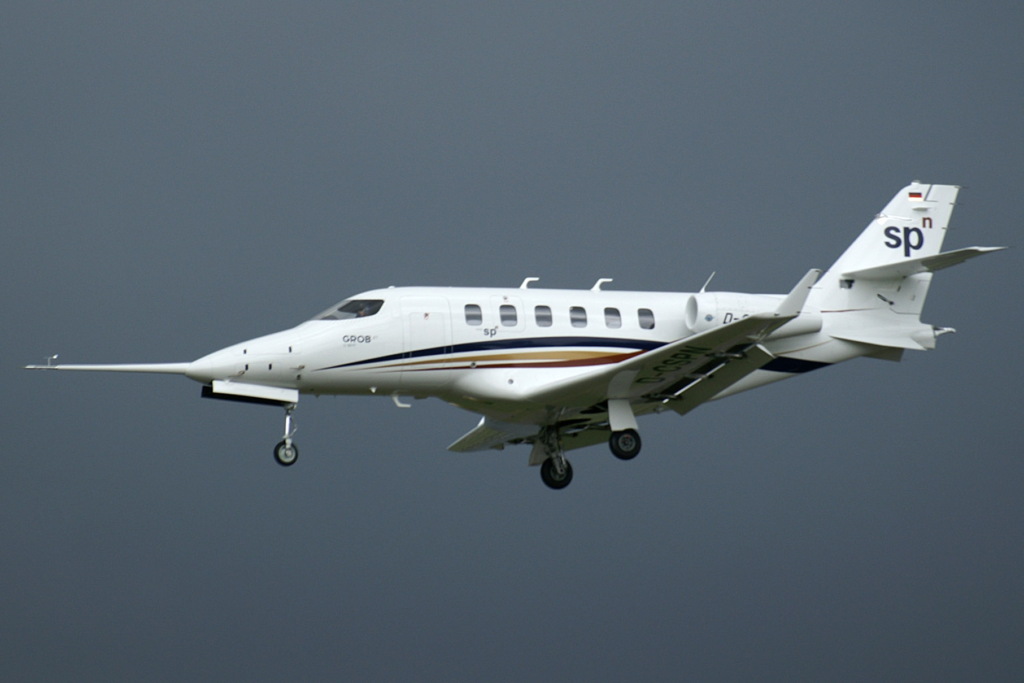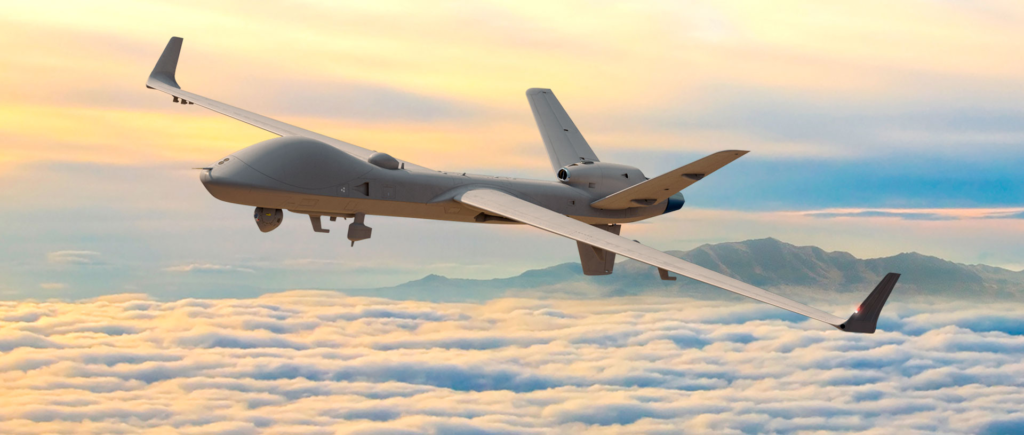India’s Jet-Powered MALE Drone Could Be a Game-Changer – Here’s Why It Matters. A recent chat with an old friend at Tata Advanced Systems Limited (TASL) turned out surprisingly insightful. During our conversation, I learned about a new project: a jet-powered Medium Altitude Long Endurance (MALE) Unmanned Aerial System (UAS) designed and built in India.
Unlike traditional drones, this one is not built from scratch. Instead, engineers at TASL have chosen a smart shortcut — converting a manned aircraft into an unmanned platform. While no official name has been confirmed, all signs point to the Grob G180 SPn business jet being the base aircraft.
Why the Grob G180 SPn is a Clever Choice
The Grob G180 SPn is a German-designed light business jet with great flight performance and a rugged, all-composite airframe. Originally meant for fast executive transport, its features work surprisingly well for MALE drone missions.
Let’s look at what it offers:
- Altitude: Can fly up to 41,000 feet — ideal for staying above threats and covering wide areas.
- Speed: Cruises at around 750 km/h — much faster than most MALE drones.
- Range: Can travel more than 3,400 km — good for strategic missions.
- Engines: Twin FJ44 turbofans — offer high speed and smooth performance.
- Payload: Can carry around 1,500 kg — enough for cameras, radars, or electronic warfare (EW) gear.
- Wingspan: Almost 15 meters — helpful for lift and stable loitering.
Because of these features, the aircraft can serve many roles — from intelligence, surveillance, and reconnaissance (ISR) to maritime patrol and battlefield awareness.

So, What’s the Catch?
The biggest challenge is endurance — or how long it can stay in the air. Let’s compare it with the MQ-9B Reaper, one of the best MALE drones today.
The MQ-9B can fly for over 24 hours straight. It uses a fuel-efficient propeller engine and was built from the start as a drone. In contrast, the Grob manned platform had endurance of 7 to 9 hours at best, the unmanned might loose out on 24 hrs straight.
This difference is not just numbers — it shows a deeper design gap. The MQ-9B focuses on long loitering, low fuel use, and quiet surveillance. Meanwhile, the Grob was built for speed and comfort, not slow endurance.
Its twin jet engines help it reach places quickly, but they also burn more fuel, especially at lower altitudes. Its airframe has more drag too, which reduces flight time. So, while the Grob drone is fast and versatile, it can’t match the long watchful eyes of the MQ-9B.

How TASL Is Making It Work
Turning a manned jet into a drone is complex engineering. Many systems must be replaced, updated, or controlled remotely.
1. Autonomous Flight Control
- The cockpit is now filled with flight computers and power systems.
- The aircraft uses a Digital Fly-by-Wire (DFBW) system to move control surfaces automatically.
- Navigation depends on sensors like GPS, inertial units, and radar altimeters.
- For safety, everything has triple redundancy — so one failure doesn’t crash the plane.
- A system for Autonomous Take-Off and Landing (ATOL) helps it fly without human help.

2. Sensor & Communication Systems
The drone likely carries a wide sensor package:
- EO/IR Cameras: For clear images in day and night.
- Synthetic Aperture Radar (SAR): For imaging through clouds and at night.
- Maritime Patrol Radar (MPR): To detect ships or sea activity.
- ELINT Gear: To listen for enemy radars during EW missions.
- SATCOM and Line-of-Sight links: For long-range communication with ground control.
All systems need thermal cooling and shielding — so they stay reliable in tough conditions.
3. Minimal Changes to the Airframe
One smart move is that TASL kept the airframe almost unchanged. This saves time and money on testing. Only key changes were made:
- The pilot cockpit now holds electronics and mission computers.
- Fuel systems may be optimized for longer missions.
- Weight balance was recalculated to keep the drone stable in all conditions.
How Does It Stay in the Air for So Long?
Jet-powered drones are rare in the MALE category. Most use propellers to save fuel. But the Grob’s jet engines aren’t ordinary — they are high-bypass turbofans, designed for better fuel efficiency.
The drone uses clever physics too:
- Large wings help create more lift with less drag — this supports long flight.
- Modern jet engines burn fuel more slowly at high altitudes.
- It can cruise between 20,000 and 30,000 feet — balancing speed and endurance well.
This makes the drone ideal for fast entry and medium-altitude loitering, perfect for intelligence and rapid strike coordination.

Final Flight Tests Are Happening Now
According to him, the drone is now in the last phase of flight testing. This includes:
- Checking emergency systems and command links.
- Testing autonomy during takeoff and landing.
- Verifying sensor accuracy and communication range.
- Validating safety features like failsafe recovery.
Once cleared, TASL may deliver India’s first jet-powered MALE drone — a huge step for indigenous drone programs.
Why It Matters for India
India needs drones for many tasks — from watching borders to monitoring oceans, and even electronic surveillance. This platform could help reduce dependence on foreign drones like the Heron TP or MQ-9B. It could also work alongside programs like DRDO’s TAPAS BH-201, offering faster speed, deep strike ISR, and greater survivability in contested zones.
Overall, TASL’s Grob-based drone might not fly for 40 hours, but it brings speed, smart engineering, and real capability. If it passes trials, it will mark India’s arrival in the high-performance unmanned systems league — and open the door to exports, innovation, and military strength powered by homegrown aviation talent.

Trade off of endurance and fuel efficiency can be mitigate because of other versatile features. We should not be nosy.
It is a great achievement on behalf of TASL, and for the nation as well.
I feel if the jet drone can stay on flight for 7 hours that’s ok. The next one can reach the sky and continue for next 7 hours. if this can be increased to 12 hours then great. we are not USA who need to patrol the whole world.
Good work but a big target for any decent Air to Air Missile due bigger RCS.
Can TASL modify it to manned ISR aircraft with more powerful HTFE engine?
It is commendable if TASL meets the needs of the Indian armed forces.
The American military industrial complex is exactly what the name suggests. Complexes of Complex.
Any need or want in a product starts with defining the functional specifications. In the case of the US, multiple companies or partners compete to develop the prototype meeting a percentage of the functional requirements that should instill confidence in the Pentagon to get their final product. The final decision follows after a lot of schmoozing, dining, wining and hopefully no whining. The US govt contributes a certain amount to the prototypes through seed/incubator funding.
There’s something mesmerizing in the way you bring clarity to complex concepts, making them feel like second nature.